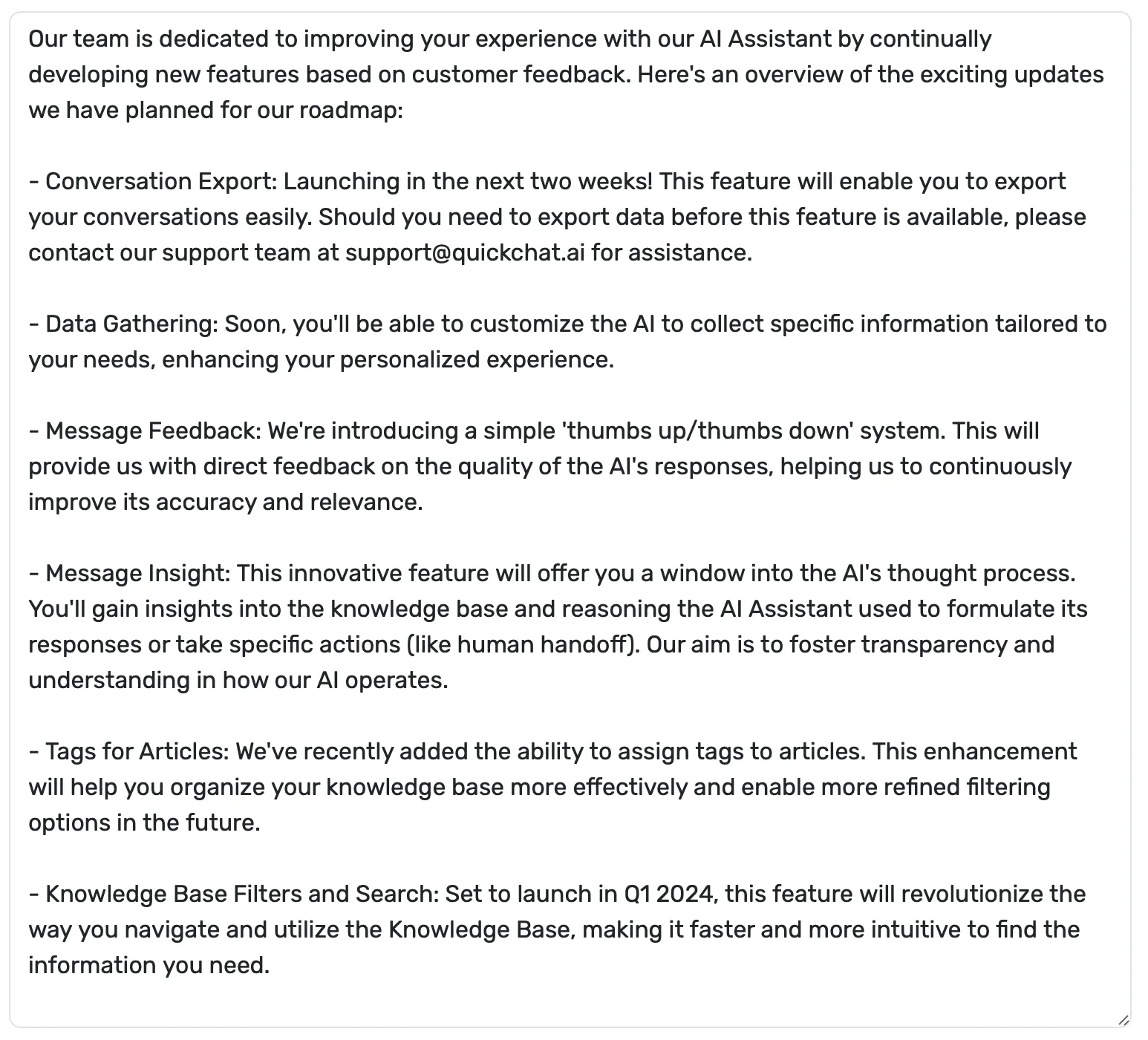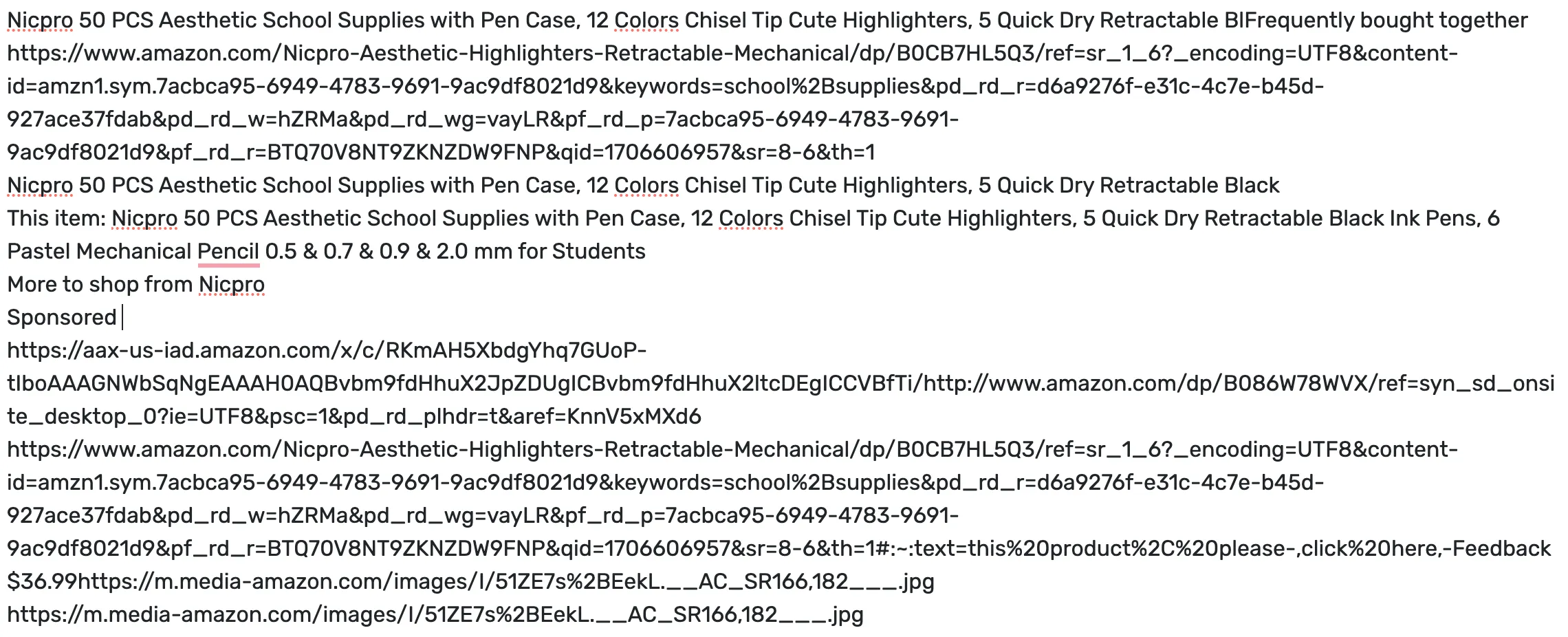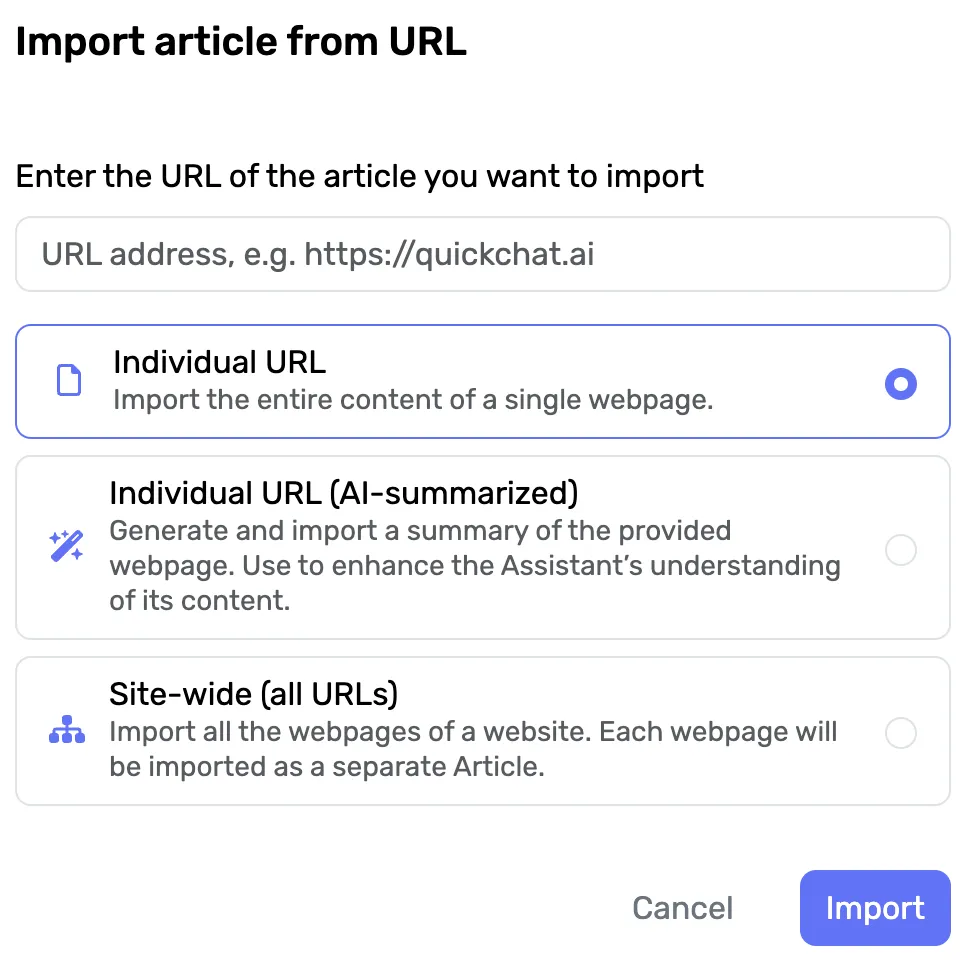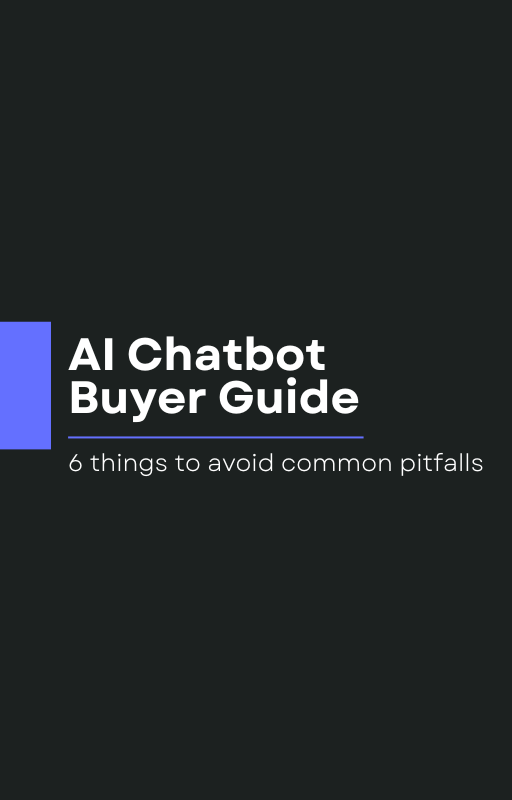In the ever-evolving world of digital communication, the quest for the best AI chatbot that offers human-like responses and reliable performance has become a top priority for businesses.
If you’re looking to build your own AI chatbot and seek the most advanced and trustworthy option on the market, understanding what makes an AI chatbot truly effective is key.
This article dives into the 6 unobvious factors that set apart a standard AI chatbot from the best AI chatbot.
I won’t talk about things like pricing, because…you know, you would have thought about it anyway.
Let’s get to the first one.
1) You can’t just use ChatGPT — you need control and customization options
AI chatbots are based on Large Language Models (LLMs). You probably heard of
and used ChatGPT — it’s amazing — and this tool, among others, is based on
them. But out-of-the-box LLMs aren’t ready for serious business applications.
Why? Well, I don’t know about you, but I wouldn’t sell my Chevrolet Tahoe for $1.

Out-of-the-box LLMs may be potentially harmful for your business
Just for context in case you missed that: a x.com user (ex-Twitter) posted screenshots of his interaction with a Chevrolet car dealer’s website chatbot and he got it to make an offer to sell a brand new car for $1. It went viral and the company removed it from its website.
LLMs are sometimes unpredictable and without additional guardrails and customizing them to your needs, you can trick them into doing things you don’t necessarily want. And things can get out of hand.
But control is only a starting point. An AI chatbot is going to be a representative of your company. It will interact with your customers, prospects and users. You know how hard it is to get the brand you’ve been building for years — the look, the voice, the vibe — ingrained in the minds of people in your market.
But if you want to try to do this nevertheless (of course you should), you
need to be consistent across every touchpoint with your company. And an AI
Assistant is of course yet another one, so you need tools that will let you
customize its personality, behavior, style of conversation, which include
things like the length of responses, how quickly it gets to the point or
whether it drops names of other products clients might be interested and more.
If you build your uniqueness on being edgy like Burger King sometimes does —
although you need to be careful with that:

Burger King’s Women’s Day tweet
You generally interact with your clients differently than, say, a bank that keeps people’s money.
In that case, you may want to stay professional and solid, unless you want the US presidential candidate to call you out on Twitter.

Chase Bank wanted to lighten their tone a bit…

…but quickly received a rather harsh response from US Senator Elizabeth Warren
There are many ways to answer your customers’ questions. There isn’t a one-
size-fits-all solution, so be sure that the tool you decide to go with offers
you comprehensive customization options to let you make the AI truly yours.
And actually reliable, so the above won’t happen to you.
2) A good website scraper
Refunds, complaints, deliveries — you know who might need super-powered customer support? Ecommerce stores. If you’re running one, you’d probably appreciate a seamless way to import all your FAQs, policies and especially product descriptions to your own AI chatbot, so it knows these things and can use that knowledge to serve your customers well.
If you’re a marketplace or sell many SKUs in your store, you definitely don’t want to build your Knowledge Base manually (you wanted to automate things, remember?). Before you buy your new custom AI chatbot, ensure that the product allows you to seamlessly build your Knowledge Base via importing your website’s content via URLs.
What do I mean by that? Well, test how these features format your content. Are they well-structured, do they contain irrelevant information like pages’ meta data or buttons’ text? Does it correctly include links to your products?
You want this:

A well-written and formatted Knowledge Base is crucial to a successfully operating Assistant
Not that:

Bad Knowledge Base, on the other hand, can break your AI
Why is that important, it’s a machine after all, right? These little things are important for the so-called embedding process that translates your data to a format that’s understandable and usable for the AI.
Secondly, pay attention to how it structures your knowledge. Because of embeddings, it’s crucial that your Knowledge Base follows a logical structure. Just like your website. Your terms and conditions document should be added to a separate element than, say, information about your ongoing promotions.
A well-designed feature would smartly create a separate element for each of your pages. If it puts all your website’s content into one bucket, stay alert. AI isn’t magic — if you can’t find your way around your documents, nor will AI.
The third aspect will be short. Sometimes you don’t want to add all of your website and only a specific page, so make sure you have that choice.

Sometimes, you only need specific pages to build your Knowledge Base
3) Reliable multilingual capabilities
You have dedicated years to perfecting your product and achieved success in your home country. You decided that it’s time to take this passion global and venture into new and promising foreign markets.
As you plan this exciting expansion, you realize something crucial: your brand’s voice, the one that resonated so well in your home country, needs to remain as powerful and authentic while abroad. Now that you have an AI chatbot, how can you ensure that your brand names, the voice you’ve so carefully crafted, translate effectively?
Theoretically, Large Language Models that AI chatbots are based on can speak multiple languages. However, the performance of generative models deteriorates quickly in languages other than English. It’s because models behind tools like ChatGPT were trained on internet data, which has way more content in English compared to other languages.
Since these models were trained on broad datasets, they may not have picked up on specialized or industry-specific language, and as a result, they can struggle with correctly translating some words and terms.
If you want to understand how that works and find out if ChatGPT is a real polyglot, check out that video:
Think of your brand’s unique elements such as product names or taglines. Since they didn’t appear in the dataset that often, they may be translated incorrectly.
For example, in Germany, there’s a museum called Kupferstichkabinett, the literal translation of which could be copper engraving cabinet but even the Museum itself translates it as Museum of Prints and Drawings.

LLMs are sometimes having troubles with correctly translating brand names
If your AI chatbot is going to interact with international customers, check if
it gives you the ability to control these things to preserve your brand names
and keep them sound natural and consistent, no matter where in the world
they’re heard.
4) Vendor lock-in and service continuity
The most popular LLMs that power your chatbot are OpenAI’s GPTs, like GPT-3.5, which the free version of ChatGPT uses under the hood. While they are great, they sometimes, just as every other service, experience downtimes and outages. Like the one following the developers’ conference organized by OpenAI?

After the announcement of GPTs at OpenAI’s DevDay, businesses faced service outages due to the overload of traffic
If you’re about to put your AI chatbot front and center on your website or integrate with the tools you or your users use every day, you need some mechanisms that secure your chatbot from going to sleep or acting in undesired ways. You should have the option to choose different LLM vendors or have built-in functionality that uses different models to ensure continuous service.
If you’re also worried about privacy issues or policies of certain LLM
vendors, choosing a product that allows you to avoid vendor lock-in might be a
good move.
5) Conversation complexity
Think about the types of questions your customers usually ask. Are they simple, repetitive and don’t require anyone to look into them in detail? That’s good, as probably most AI chatbots can handle them nowadays. But even if you’re not running a niche, technical, IT consultancy, once in a while you’re going to encounter a rather unusual inquiry or one that requires a human action like investigating a complaint.
In these cases rather than having the AI impersonate an actual human or give inaccurate responses to your customers, you may want to have more control. Look out for features that let you always take the reins if needed. Ideally, an AI chatbot should automatically detect whether, for example, an angry customer demands to speak with a human and pass such a conversation to your customer support team.
You should have the option to trigger such handoffs by letting AI analyze the context of the conversation and make the call or at least by letting you set keywords that indicate the need for a handoff such as “cancellation” or “refund”. Your chatbot should seamlessly work with your team, blending the power of human and AI support to create the optimal experience.
Oh, and since you’re handing off a conversation to your team, check if you can
set your working hours and if your chatbot can communicate this to the
customer.
6) Integrations
Conversational AI tools don’t live in a vacuum nor does your business, so definitely check out their integration pages. Most of them should have the option to embed a widget on your website, but if you’re, say, an ecommerce, you probably talk to your customers in many different ways.
WhatsApp, Facebook Messenger, Telegram, Instagram, Slack, Discord — those are
the places your customers hang out at and your chatbot should be able to
answer questions there directly. And that’s without taking up the time of your
IT department. One-click integrations are always nice.
Conclusion
Having these factors in mind while choosing your AI chatbot will result in a better decision and probably prevent you from experiencing a serious headache (or actual harm). Each business is different and requires proper customization options to truly tailor the AI chatbot to its needs.
If you’re looking for one, sign up and start building your Quickchat AI chatbot for free to experience the capabilities of an advanced AI chatbot. It’s risk-free and no credit card is required.

